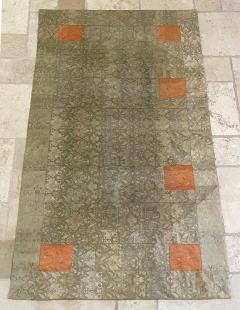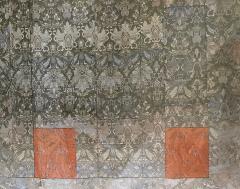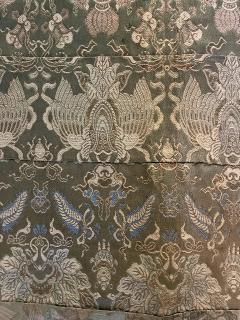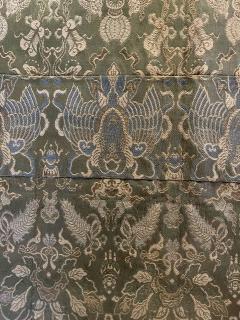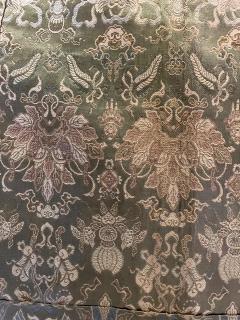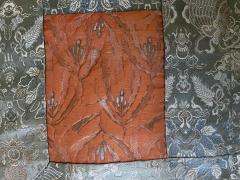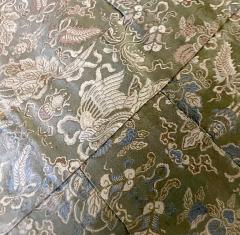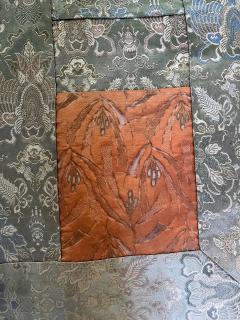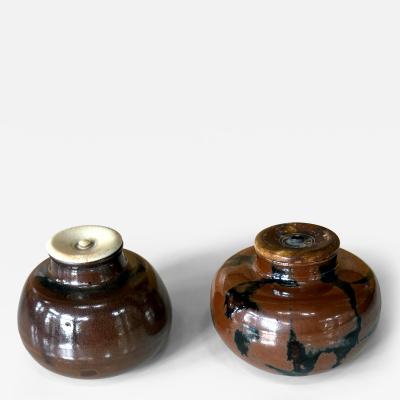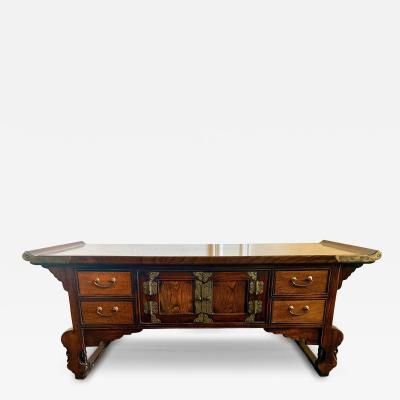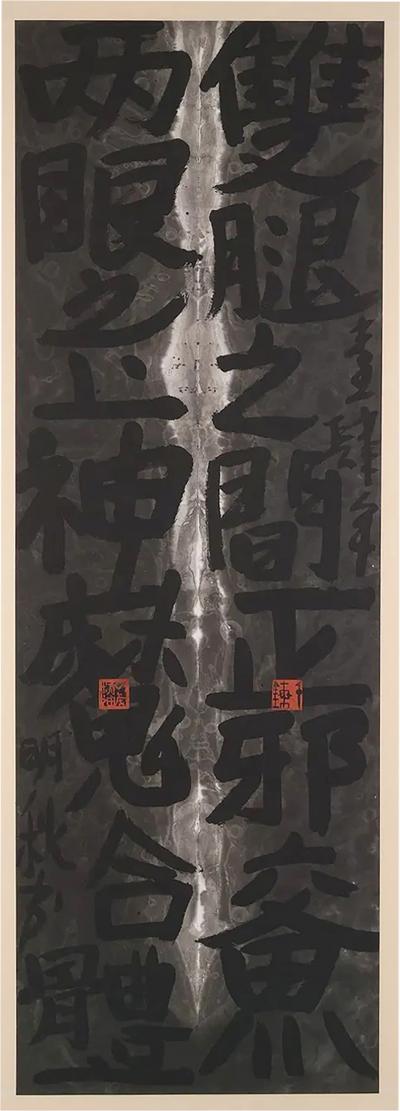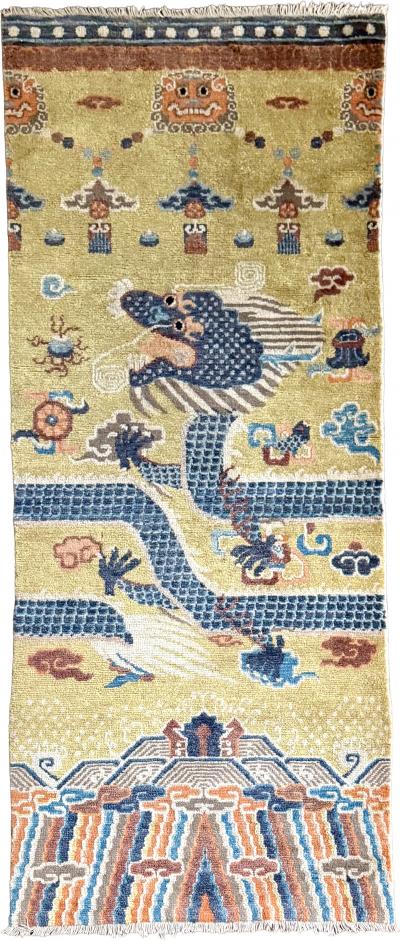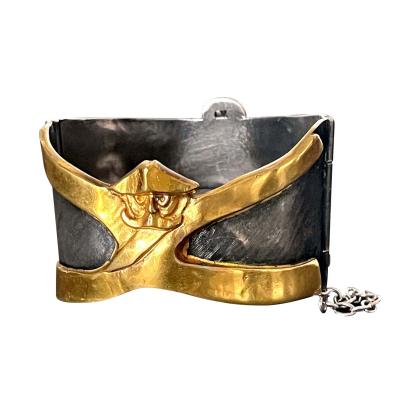Antique Japanese Brocade Monk's Robe Kesa Meiji Period
-
Description
A Japanese Kesa (Monk's Vestment) made from thirteen columns of patchworks of shimmering woven brocades. The elaborate motifs feature repetitive elaborate floral designs with variations. Six silk square in contrasting bright orange color with subtle embroidered patterns were sewn to the four corners and along one longitude side of the Kesa, completing the symbolism of the robe. The four squares in the corners represent the Four Heavenly Kings (Shi Tenno); while the two slightly larger squares in the middle section represent two compassionate bodhisattvas. The back of the Kesa was lined with a turquoise-color silk with loops for hanging, obviously a more recent lining replacement.
Kesa is derived from the Sanskrit word kasaya, meaning “dark colored,” a reference to the saffron colored robes worn by early Indian Buddhist monks. It is essentially a rectangular cloth originally sewn from patches of rags, being formless, it serves as a symbolism of the ascetic life of one's choosing. In Japan, since at least the Heian period (794–1185), the kesa has been worn by Buddhist priests as their outermost robe, draped over the left shoulder and attached under the right armpit. While it served some function of protection, it was more a signal of the wearer’s faith, and became increasingly elaborate over the centuries. During the Edo period (1600–1868), many kesa worn were patched together from exquisite silk brocade fabrics that were donated to the temples by members of the aristocracy, ruling military class, or wealthy merchants. By stitching the fabric into a patchwork robe, the monks concentrated their attention on the creation of a devotional work of art, every stitch part of an act of meditation on the teachings of the Buddha. The number of stripes (from 5 to up to 25) indicates the wearer’s rank and the occasion for which it was worn, the highest number of stripes usually only being worn by an abbot during festival ceremonies. The normal daily kesa generally have seven columns. The kesa on offer is more likely a ceremonial robe for special occasion. -
More Information
Origin: Japan Period: 19th Century Materials: silk and brocade Condition: Good. Fine antique textile condition. Color is a but uneven with the center slightly darker, maybe due to the folded exposure. loss threads on one seam hard to notice. Backing silk is of a more recent time. Creation Date: 19th century Styles / Movements: Asian, Traditional Patterns: Abstract, Asian/Oriental, Florals/Botanical, Handmade Incollect Reference #: 604169 -
Dimensions
W. 46 in; H. 77.5 in; D. 0.1 in; W. 116.84 cm; H. 196.85 cm; D. 0.25 cm;
Message from Seller:
Tishu, based in Atlanta, GA, offers a diverse collection ranging from Neolithic art to 20th-century collectibles, with a focus on Mid-century design, Japanese and Korean art, Asian textiles, and Contemporary Aboriginal art. Driven by a passion for timeless beauty, the gallery is open by appointment only and offers works that span 5,000 years of history. Reach them at 305-400-0561 or tishu@tishugallery.com.

















